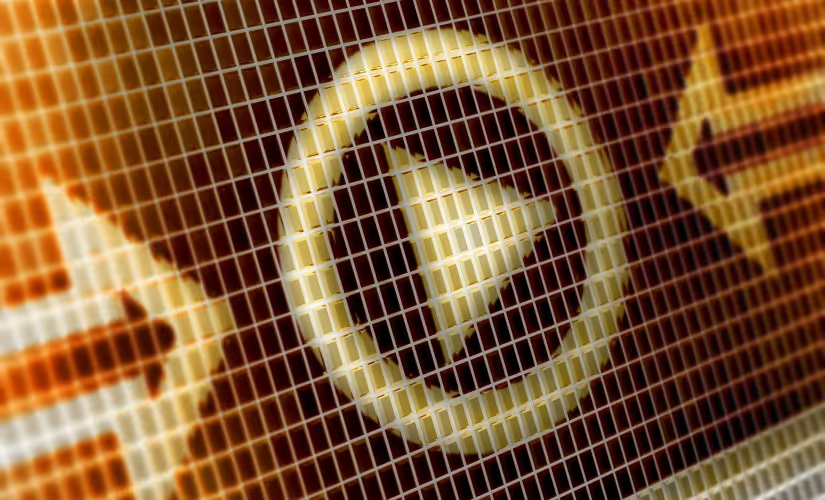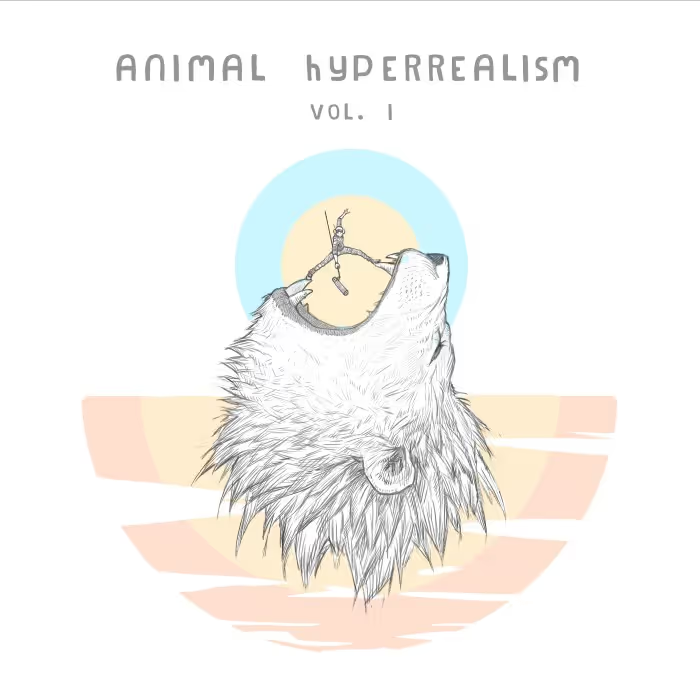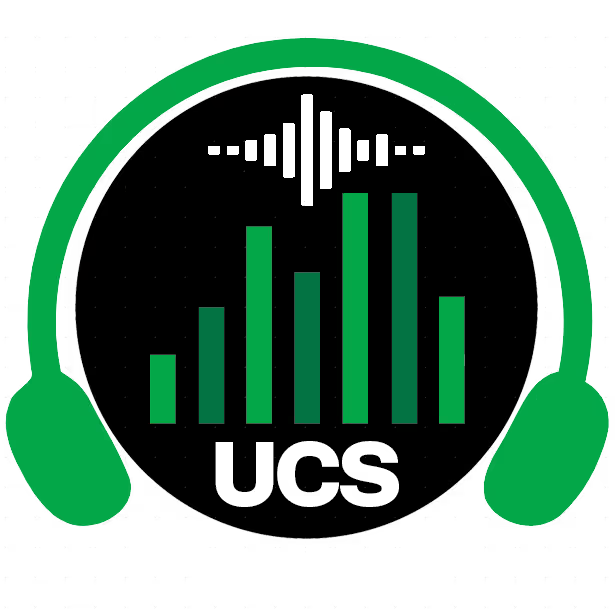That doesn't have to be the case at all: In this guide, Ali Tocher highlights key items to focus on for a lean, effective game audio setup that gets you off the ground without breaking the bank - and what to go for as your game audio career evolves:
It worries me that you might think you’ll never be a game audio designer because you can’t afford the gear.
Our field suffers from a lack of diversity. We need new voices to bring their experiences and stories. One barrier that I have personally recognised is the perceived requirement of expensive equipment to make professional audio for games. I think we can work to take this barrier down a notch. The stereotype of the white male, big mixing desk, racks, surround speakers etc is no longer the only truth of what a game audio designer looks like, especially during the pandemic. AAA games are being made in bedrooms now too.
I’d like to suggest that, from my own experience, there is a path to professionalism through gradual accumulation of a basic kit.
It’s important to be frank here though. This is still a very privileged industry and even the basic equipment will cost a considerable amount of money. Competition is also increasingly fierce. Junior positions receive hundreds of qualified applicants. What this means is that, whether you intend to freelance solo or aim for a AAA in-house role, you will need to start designing and implementing sounds at a near-professional standard to be considered.
Your business and your craft will be founded on who you are, not what gear you have
The truth of the matter is that your gear is not what will make you stand out from the crowd. No client or senior in a hiring position will have any interest in what gear was used to create your early works. There is a baseline of audio quality you must reach but beyond that your audio design ethos, understanding of player experience, study of contemporary games, ability to be a good team member, be a nice person, and openly communicate are what will make you a good audio designer. Those are all free. Do the work here and the weight that you need to place on the expensive stuff massively diminishes. Your business and your craft will be founded on who you are, not what gear you have.
There are great resources for this topic. This article that defines the roles in game audio, and this awesome collection of books on this very website (Rob Bridgett’s and Damian Kastbauer’s stand out to me).
Also this amazing collection of knowledge, collated by Mark Kilborn.
Knowledge and understanding of the field will truly help to separate you and enable you to show your considerable passion for game development. However, there is no side-stepping the need to show your ability to make great sound. This is my personal list of what I think is a minimum gear list. It’s what I’ve used to obtain a professional footing. Others will have their own opinions I’m sure. Frankly I’ve been afraid to show how limited the gear I’ve used is, and I think perhaps others are too. And I think that’s probably doing damage to the way that new people feel about entering this field. So here goes:
Essential Gear list
Min spec gaming PC
This is probably the biggest cost item. Perhaps you can justify it, or already have it because you really want to play PC games anyway.
I know a lot of audio people learn and grow up on Macs. You can probably get away with using one. But it will need a decent graphics card. The issue is that indie games are not optimised during development, or sometimes ever. By the end of my first project it would take 40 minutes to load a new scene in Unity. If you happen to have a high spec Mac already and you can put Windows on it you’ll be fine but otherwise a PC tower or laptop will be much easier to build affordably. Unity, FMOD, Wwise (sort of) work on Macs. But most indie games will be developed in Windows.
48khz USB Soundcard
For example the Focusrite Scarlett, or Saffire for an extra input channel. It’s crucial that you can ensure you’re listening to the audio you’re creating in a professional environment. One microphone input is plenty. In fact both mics and monitor speakers are not going to make this essential list. And though you can spend a lot more here, this level of soundcard is totally acceptable. You shouldn’t get any noise from your PC via USB but if you do (I did) try putting some cheap DIs in the signal path.
Headphones
Please don’t buy a gaming headset. Buy audio production headphones with a flat frequency model. The standard of audio reproduction you can get from headphones is so much more cost efficient in headphones than speakers, and don’t require any room treatment. Brands like Sennheiser, AKG, Audio-Technica make headphones for £150-200 that are absolutely professional quality. Headphones with replaceable cables worked well for me.
Please don’t buy a gaming headset. Buy audio production headphones with a flat frequency model
That’s the bit that breaks and though not necessarily efficient it’s easier to scrape up £20 for a new cable every year or two. Maybe noise-cancellation is a worthwhile investment too if you don’t have access to a quiet environment to work, otherwise closed back headphones will cut out most of what you need. You can also use cheap headphones, earbuds, laptop speakers, your phone to perform very effective reference monitoring.
Digital Audio Workstation
Reaper is becoming an outstanding option for game audio. There’s a fully functional free demo and a very reasonable pricetag for purchase. However the demo won’t expire and honestly, I don’t think anyone will look down on you if you wait until your first actual paycheck to pay the bill.There’s also a lot of resources to help you improve.
Sound libraries
Look no further than A Sound Effect. It will be very difficult to cost-effectively record your own sounds early on. I would not recommend a field recording kit to start. That’s something you can work towards. Even home recordings will be very hard to produce professionally, outside of a subset of objects. Hopefully you can land paid projects that will allow you to justify steadily increasing your library.
Plugins
Another area where you can exercise caution and restraint. Mastery of a few plugins will massively outperform owning a tonne. Even the free plugins that come with Reaper can be totally effective.
Mastery of a few plugins will massively outperform owning a tonne.
There are a lot of high quality free plugins too. Like these. Sign up to newsletters and look at your favourite suppliers websites. There are regular sales.
Honestly that’s it. You can make professional audio using only these things. I assure you of this fact.
A Condenser Mic
I actually toyed with leaving this off the essential list. I think that technically you don’t need this. However the understanding of sound effects from their fundamental starting point is going to be hugely instructive to how you design and how you choose library assets. Affordable options are available for example an MXL 990 or AT2020. I would also point out (from years as a live sound tech) that cheap stands and cables are a cost fallacy. Buy mic stands made by known mic companies (AKG, Audio-technica etc) and buy cables with Neutrik connectors. Learning to solder can also be a valuable investment of your time.
Gradual Increase Gear List
There’s some more things you’ll want to acquire as soon as jobs allow. But they are NOT essential. You can be a professional game audio designer without any of the following items. The obvious ones would be:
More Mics
Many more mic types exist, for good reason. Shotguns, contact mics etc etc will allow you to record more things in more places.
Monitor Speakers
Close field monitors are a great target. Properly installed these can give you an acceptable listening environment in an untreated room. But high-end monitoring solutions are probably lost on your home studio. Monitoring LFE/sub is a challenge however. You will need to be very judicious with EQ to make sure you’re controlling those frequencies. Also consider whether you can borrow a sub or hire/borrow a studio to mix your game before shipping with untamed low frequencies. Realistically though, your clients don’t hear these frequencies either. So in the worst case scenario just mix them out and live with it. This is perhaps contentious, but having killer sub-base is not worth keeping under-priviledged folks out of our industry and I will not be convinced otherwise.
More advanced soundcard
If you start to record more then having 96khz recording capability and the ability to record more mics simultaneously will be beneficiall. Be aware that until you have a low-noise space you’ll need to spend some time in RX to get much out of this extra functionality. Same for those nicer preamps if they’re just bringing up your noise floor.
More Plugins and RX
Izotope RX is pretty hard to do without if you want to record more too. It’s not cheap (though there are sales) but get the basic edition and value it over room treatment and mic quality which both cost much much more. Some plugins can help up your quality or save time. Again, do research and focus on learning a few over acquiring a lot.
 Tesla Model X 2015 electric full size crossover SUV sport utility vehicleKrampfstadt Studio65,00 $32,00 $51% OFF
Tesla Model X 2015 electric full size crossover SUV sport utility vehicleKrampfstadt Studio65,00 $32,00 $51% OFF
Field Recording Setup
This should be a stretch goal. I think we all want it. But for value you’ll struggle to compete with indie library recordists. Alternatively, if recording is captivating to you, and you have the resources, consider this approach.
Midi Controllers
A truly great tool that you don’t need. However cheap entries into this category will go a long way to improving your sounds. You truly can start by using your mouse and learning what to automate first, and then buy controllers as you grow into needing them.
I hope that you take away from this some belief in yourself, that if you put the work in it will show. Even if you don’t have the same resources or equipment as others, you can still be considered an equal member of the community. Game audio is a friendly and welcoming place. There are a lot of folks who, if asked specific questions, will gladly take some time to help you out. (Over 100 on Twitter alone) Be humble, be polite, show effort and you will be most welcome. Gear is not the ticket to entry in the game audio community.
Ali Tocher is a freelance audio designer. His company LookListen Audio collaborates with games studios in the UK, Europe and the US. He also designs sound for medical care and therapy. Ali is currently a BAFTA Breakthrough Games Honouree for 2020, a career development program through which he is focusing on helping to improve diversity and work/life balance in the games industry.
Power Lists - essential audio resources and insights:
• The Sound Design Power List
• The Game Audio Power List
• The Film Sound Power List
Succeed in sound:
• How to Set (and Get) the Right Price for Your Audio Work
• 10 Essential Tips for Game Audio Freelancers
• How to be a successful sound designer – with Scott Gershin
• How To Actually Live as an Audio Freelancer – by Melissa Pons
• How to set your sonic creativity free & overcome creative inhibitions – by Mark Kilborn
• 5 Useful Tips for Upcoming Sound Designers and Sound Editors
• Sound Opinions: How to get game audio pricing right
• Building a successful audio post studio – with Kate Finan and Jeff Shiffman
• Rebuilding your studio: Goals, tips and lessons learned
• Creating audio for games – with Martin Stig Andersen
• A life in sound: How to foster creativity and protect yourself from burning out – with Chance Thomas
• Better audio work habits: How a Wacom Tablet can help reduce the risk of Repetitive Strain Injury (RSI)
• Better audio work habits: How a sit & standing desk can reduce your sedentary studio life
• Tips and thoughts on running your own audio post production house – with William McGuigan
• 30+ year audio veteran Andy Greenberg, on building client relationships in the advertising industry
• 7 Sound Alternatives to Working For Free
• Audio Outsourcing Success: Essential Tips, Thoughts and Working Practices from Adele Cutting
• How to succeed in UI/UX Sound Design, ADR Recording, & Audio Programming
• How to succeed in sound design for Film, Documentaries, and Trailers
• How to succeed in sound design for Games, Animation, and Television
• How to succeed in Field Recording, Foley, and Teaching Sound
• How to succeed in Audio Branding, Music Editing, and sound for VR
• How to succeed in Theater Sound Design, Podcast Sound Design, and Podcast Production
• How to succeed in Sound Editing, Sound for Advertising, and Production Sound
• How to succeed in Sound Editing, Sound for Advertising, and Production Sound
• The Composer Success Series: Composing for Film – ft. Pinar Toprak, Nainita Desai, & Jonathan Snipes
• The Composer Success Series: Composing for TV – ft. Charlie Clouser, Sherri Chung, & Cindy O’Connor
• The Composer Success Series: Composing for Theatre – ft. Elyssa Samsel, Kate Anderson, and Daniel Kluger
• The Composer Success Series: Composing for Games – ft. Inon Zur
• The ‘Quit Aspiring’ book – by Adam Croft
• How to get hired in game audio – thoughts and insights from your potential employer’s perspective
• Why gear is not the ticket to entry in the game audio community
• 4 Effective Ways to Break into Game Audio
• Tips for Creating a Perfect Resume for Audio Industry Jobs
• Yet Another Game Audio Hiring Article – by Ariel Gross
• 5 Tips for Getting a Job in the Audio Industry
• Applying for a job in game audio – by Matthew Florianz
• Freelance Game Audio: Getting Started and finding work – by Ashton Morris
• How to get started (and make it) in game audio – 10+ fundamental questions answered by Akash Thakkar
• Courses: How to network and get paid for your work in the game industry – by Akash Thakkar
• How to Craft a Perfect Cover Letter for Audio Industry Jobs
• Get the weekly Audio Jobs newsletter
• Join the Audio Jobs Facebook group
• Upload your demos to Soundcloud
• Upload your demos to ReelCrafter
• Find interesting audio events around the world
• Find other audio pros around the world
• How to prepare for – and power through – a layoff in the game audio industry, with Brian Schmidt:
• How to Survive a Game Audio Layoff – insights from Damian Kastbauer
• What it’s like to be laid off from your video game studio
• What To Do Before and After Being Laid Off
• Facebook Group: Survival Skills for Creatives
• How To Learn Game Audio Online – A talk with Game Audio Educator Leonard Paul
• Hear the very best podcasts about sound
• Read the 100s of sound stories and guides on the A Sound Effect blog (search for stories here)
• Browse Industry Data: Game Music and Sound Design Salary Survey Results
• Browse 100+ Sound Design Guides
• Find essential books about sound – for film, games and audio post production
• Get tips and ideas for making your own sound effects
• Use the Audio Events Calendar to find audio-related events around the globe
• Get a steady stream of great sound stories from the community
• Discover 1000s of sound libraries from the independent sound community
• Take online courses in Wwise, FMOD Studio, Unity, Pure Data & Unreal at the School of Video Game Audio
• Sound effects survey results: Here are 90+ ideas for new SFX libraries
• How to create an indie sound bundle
• The quick-start guide to adding sound FX library metadata




